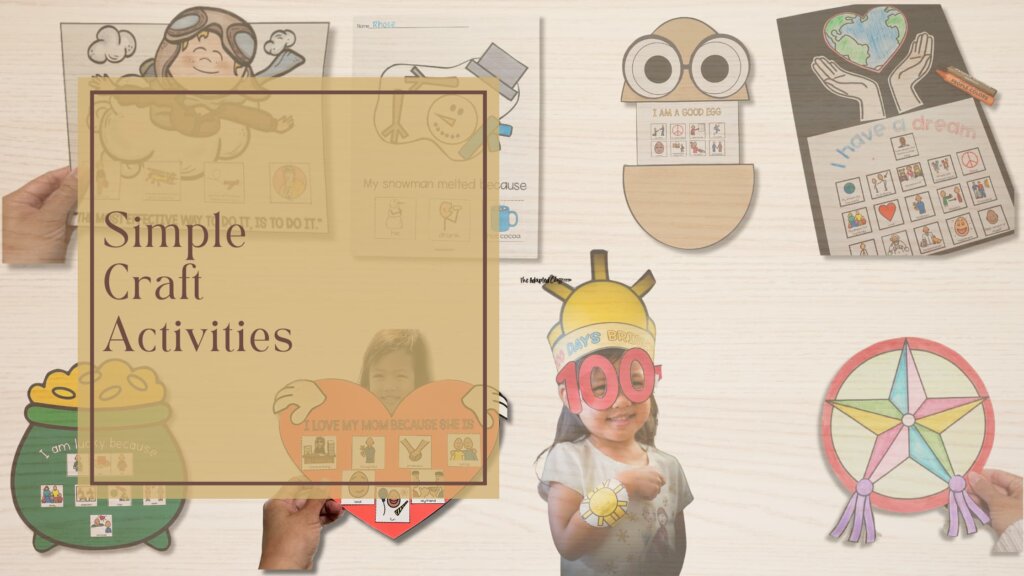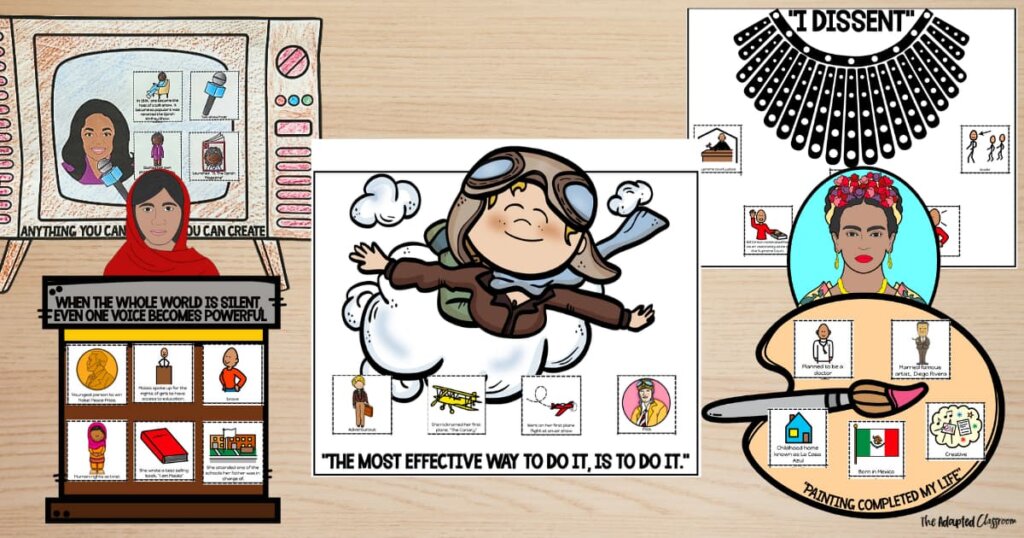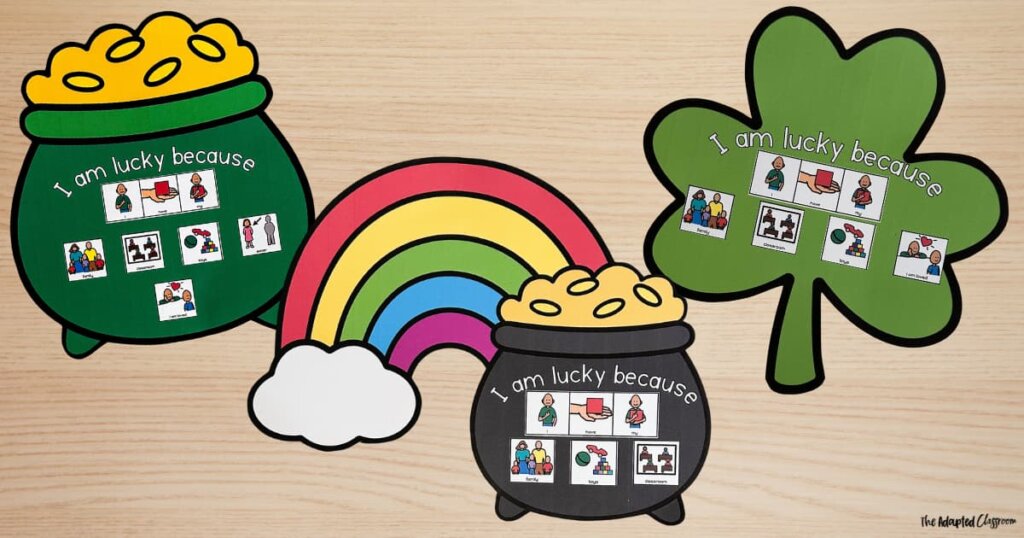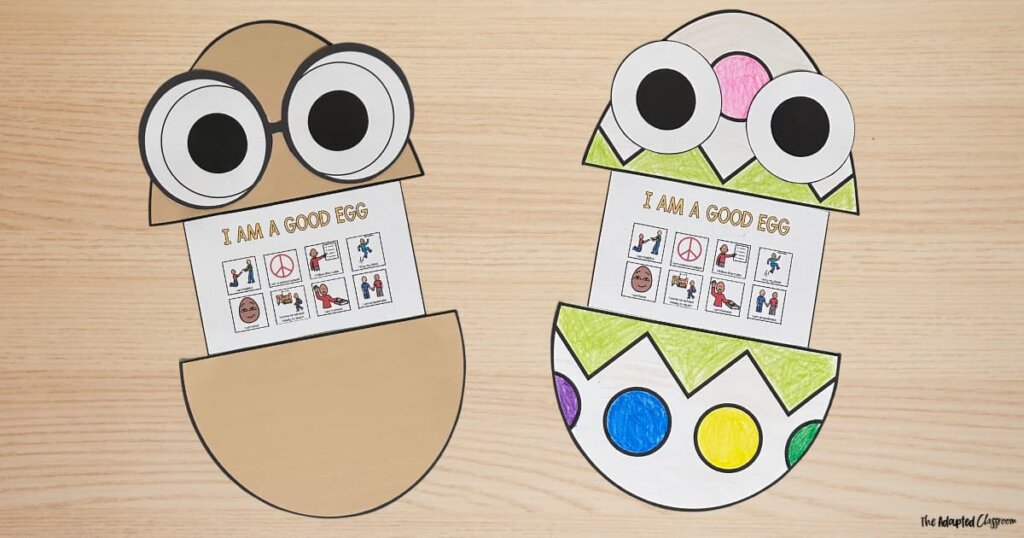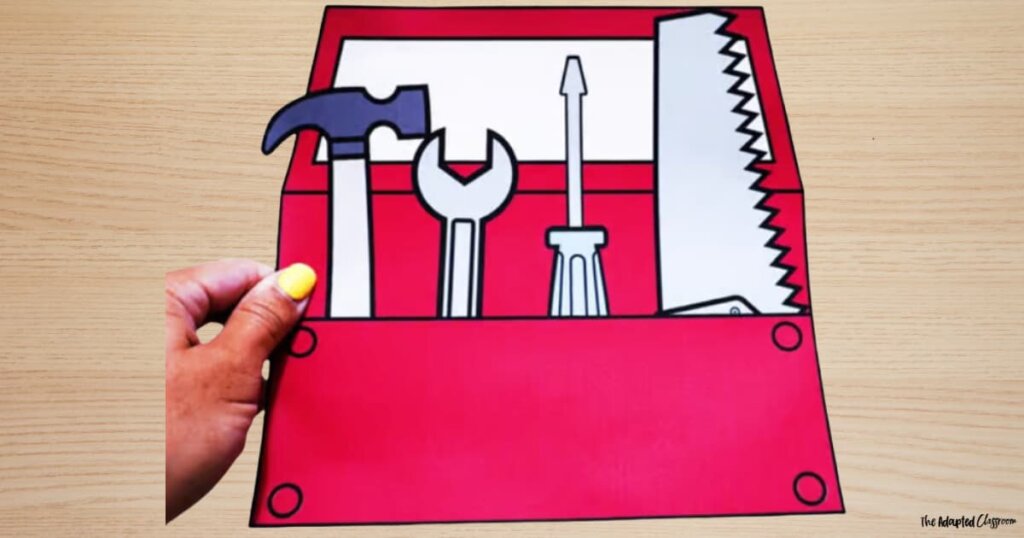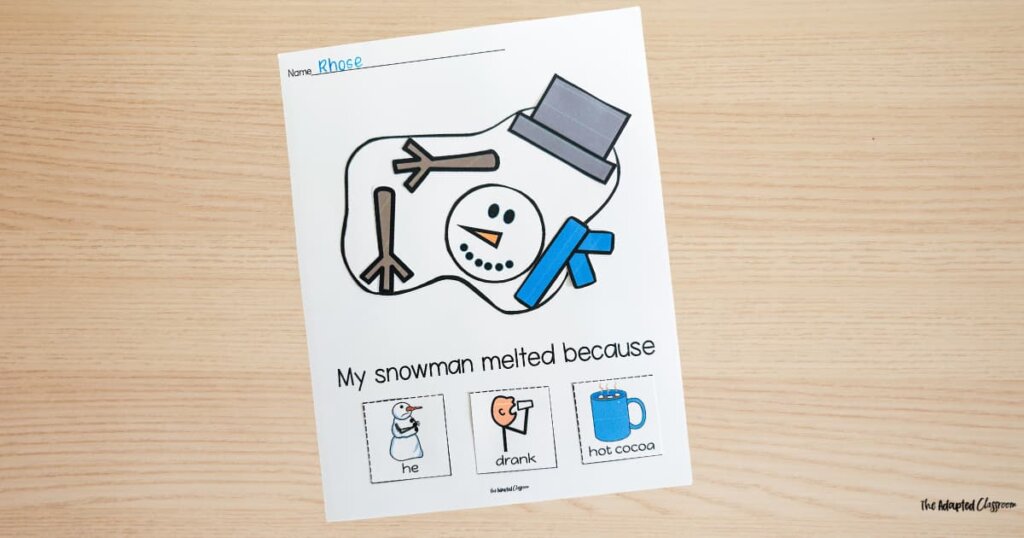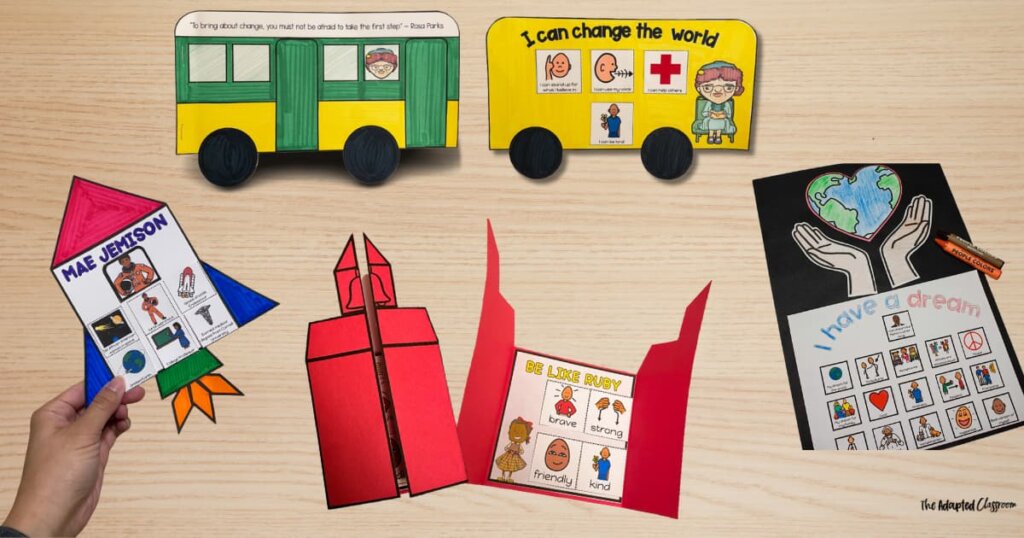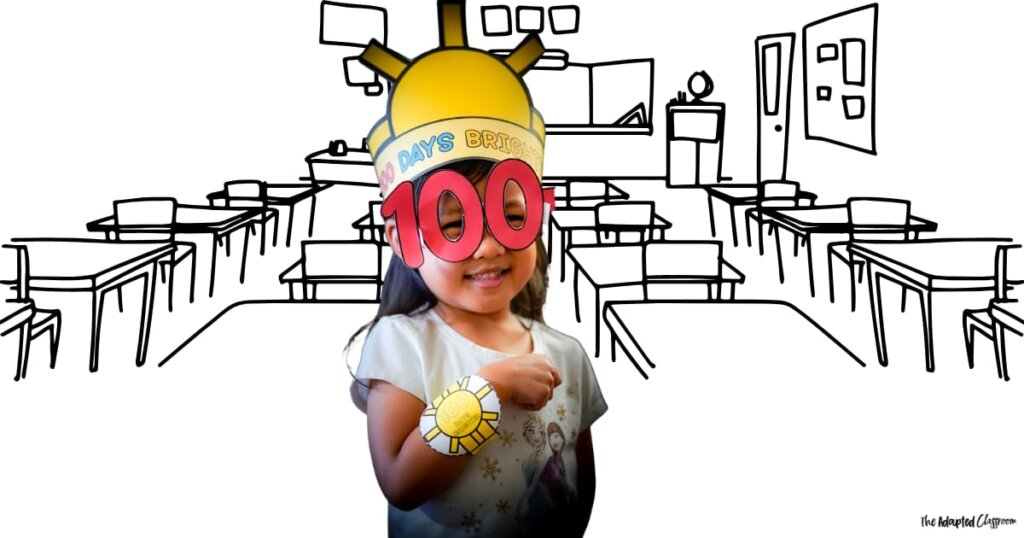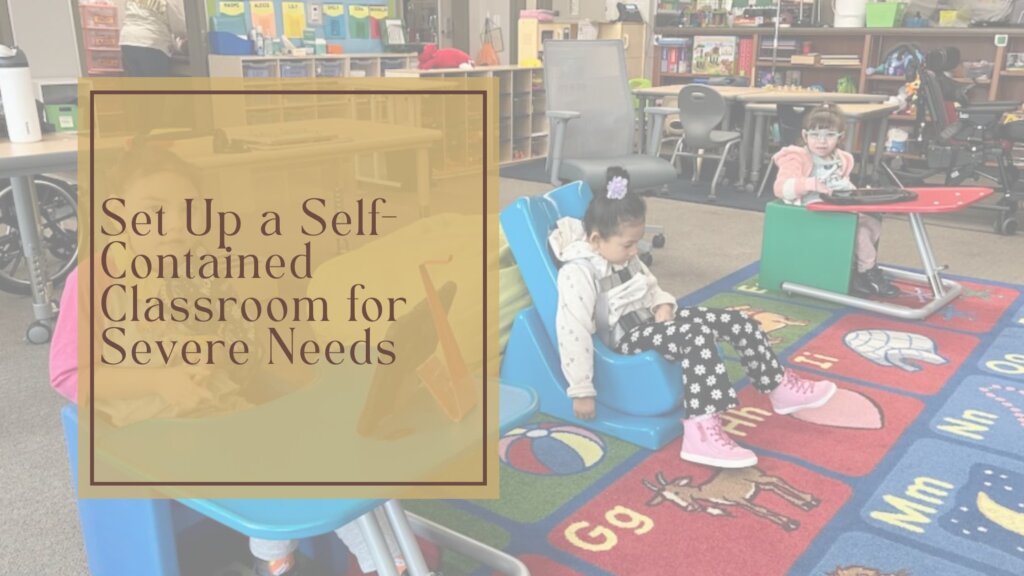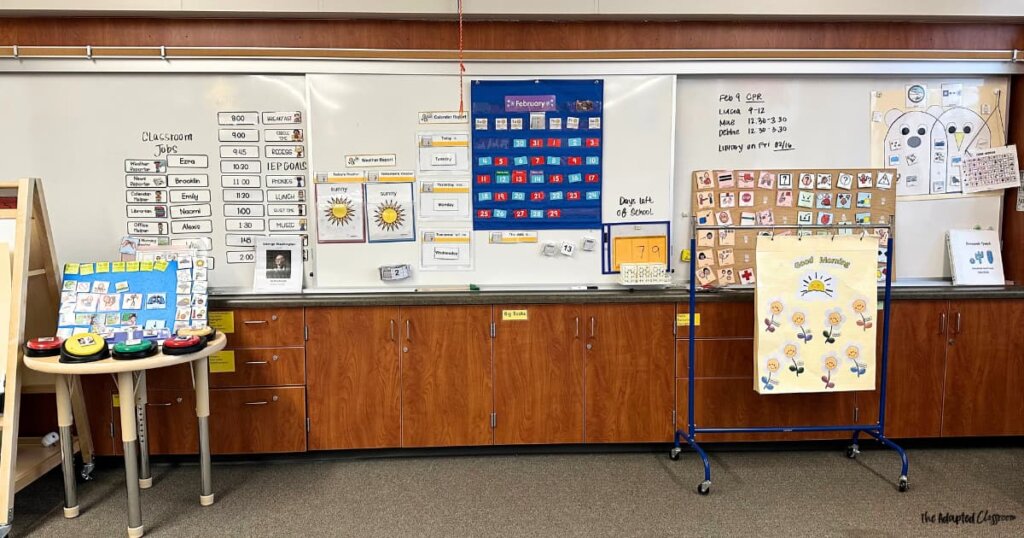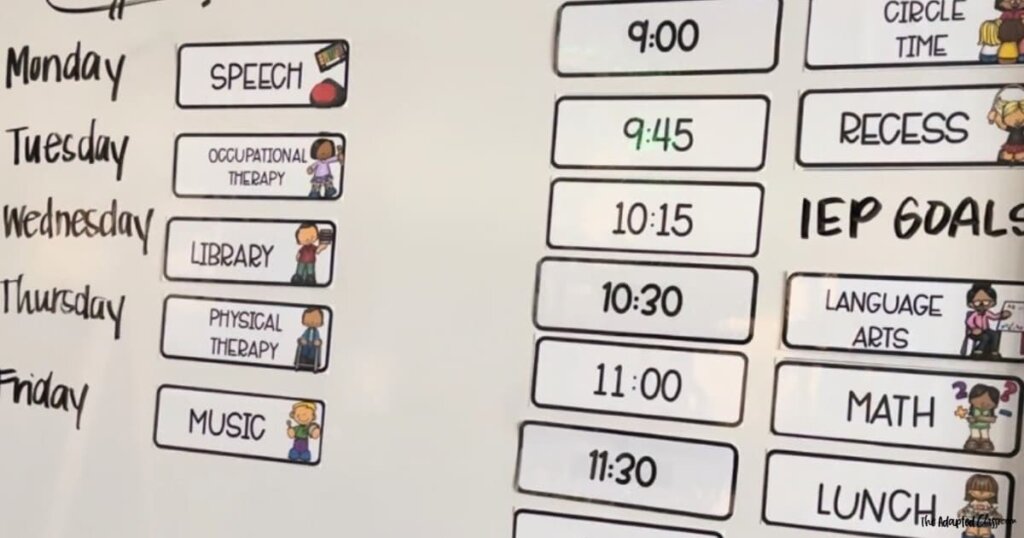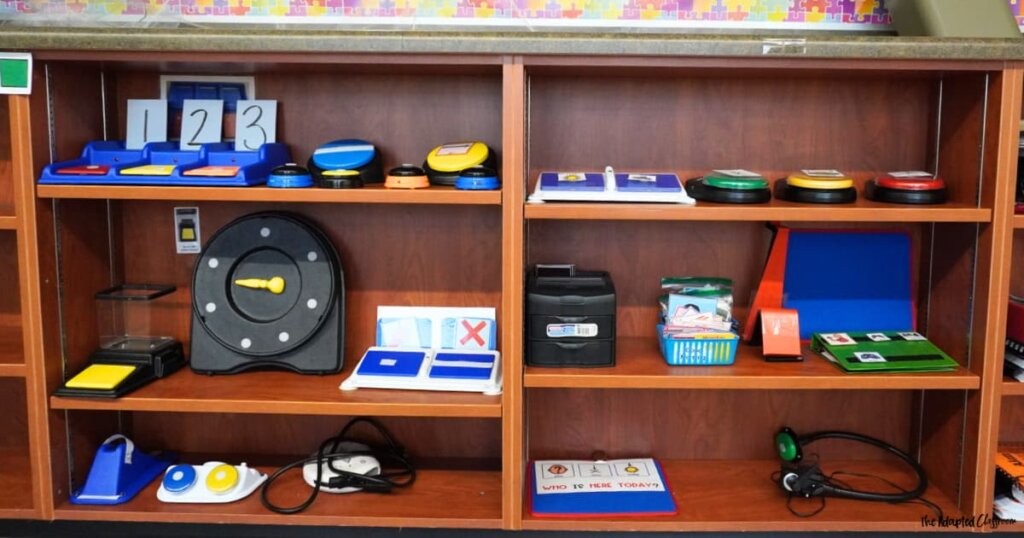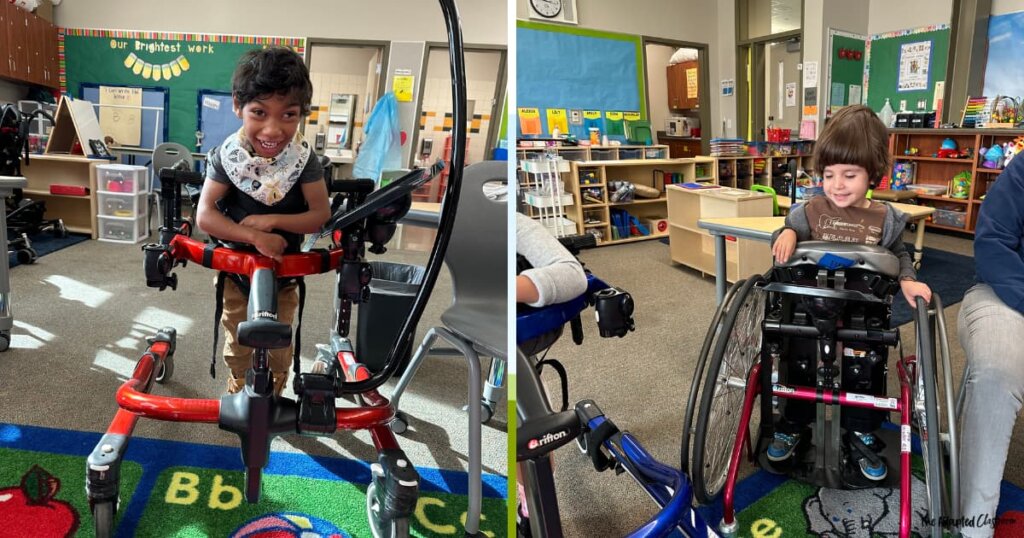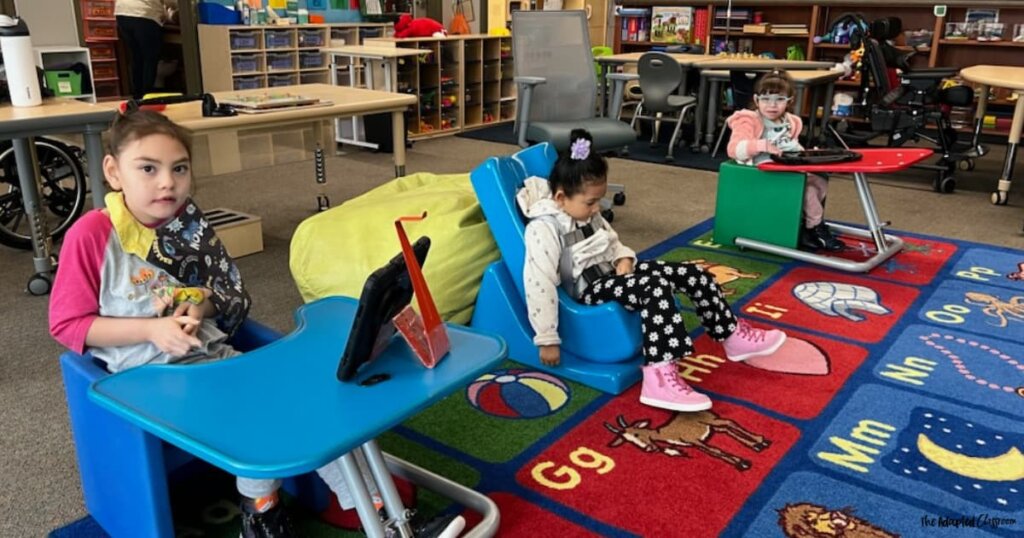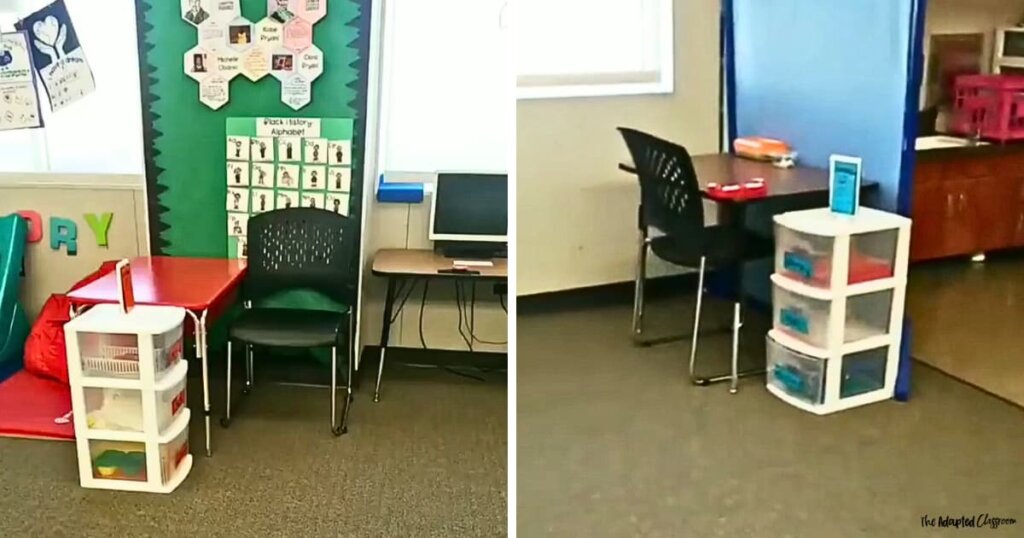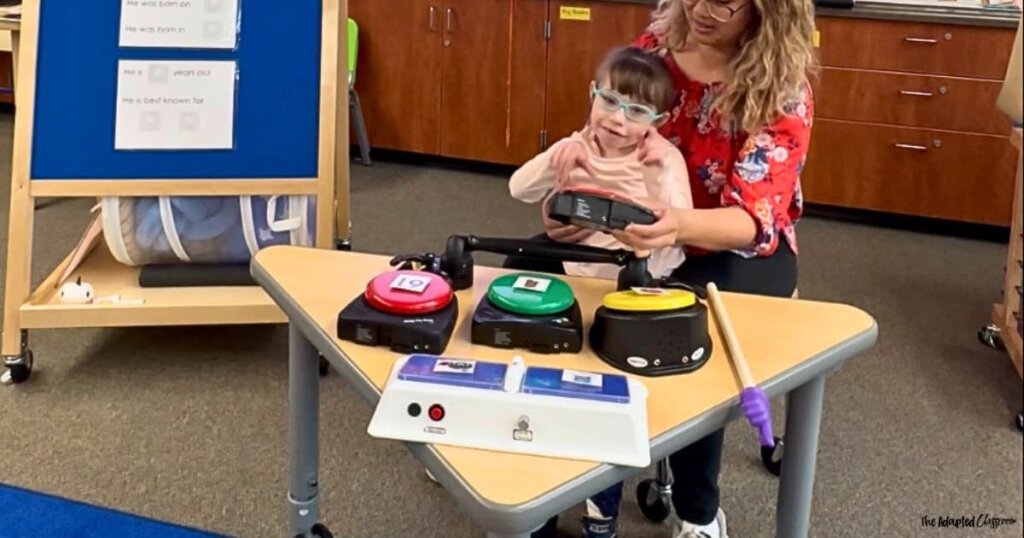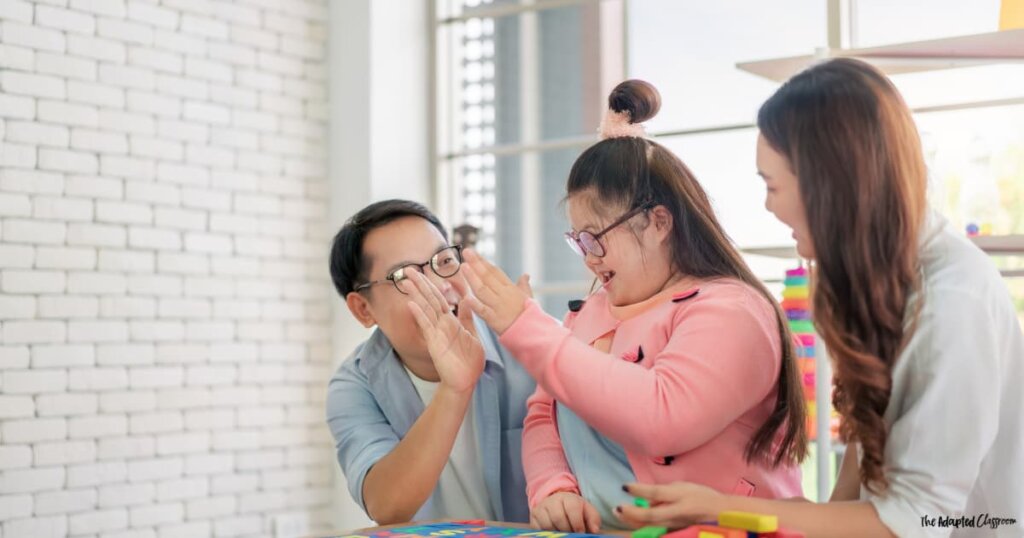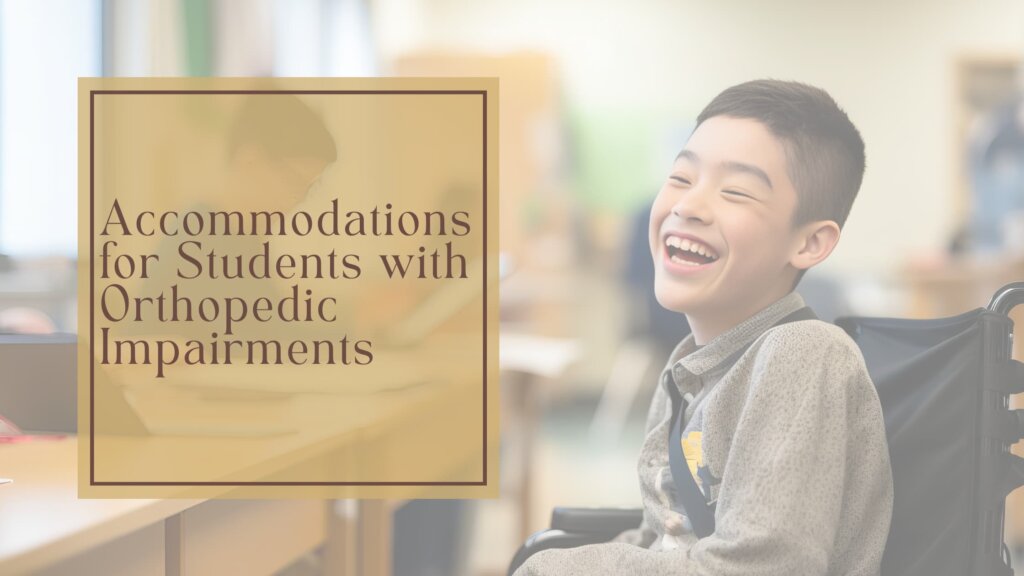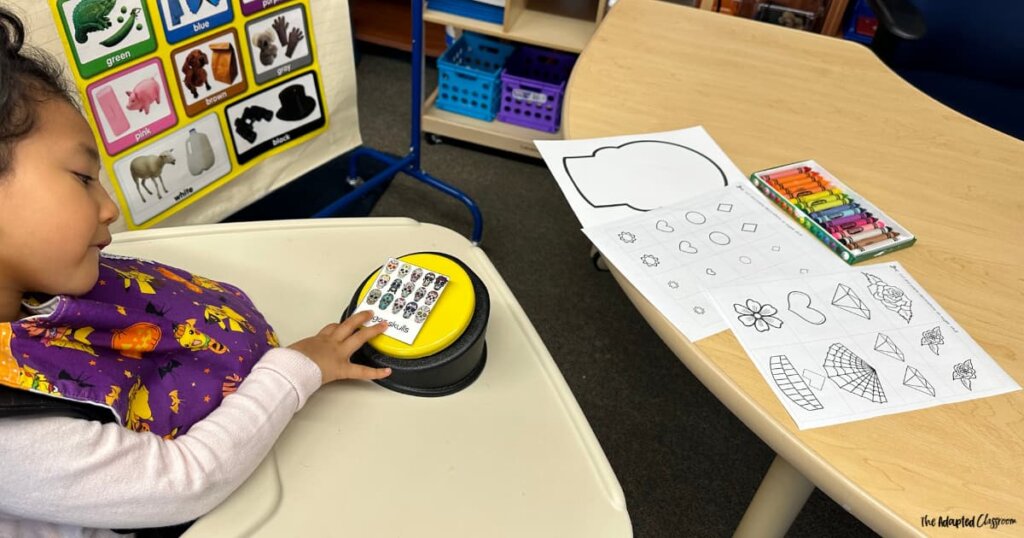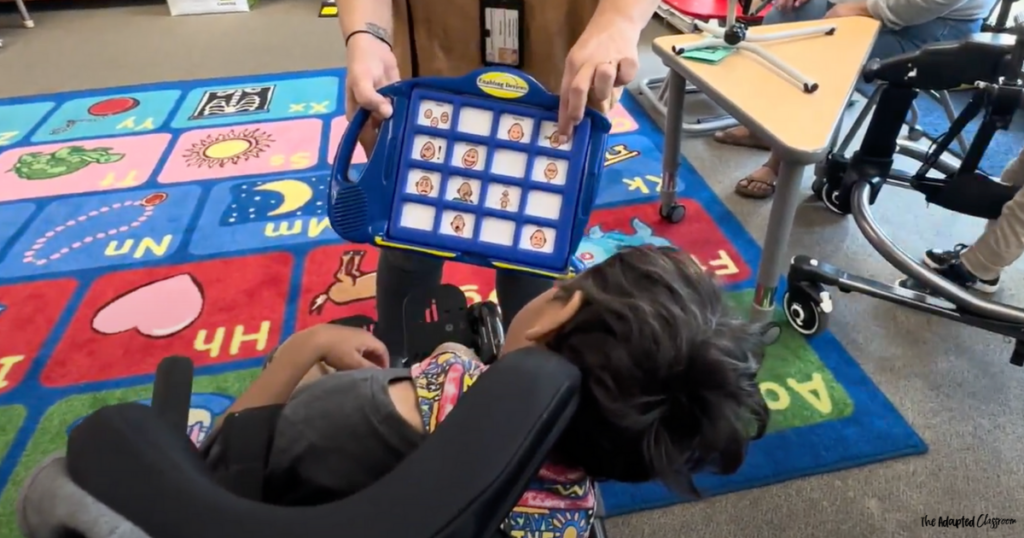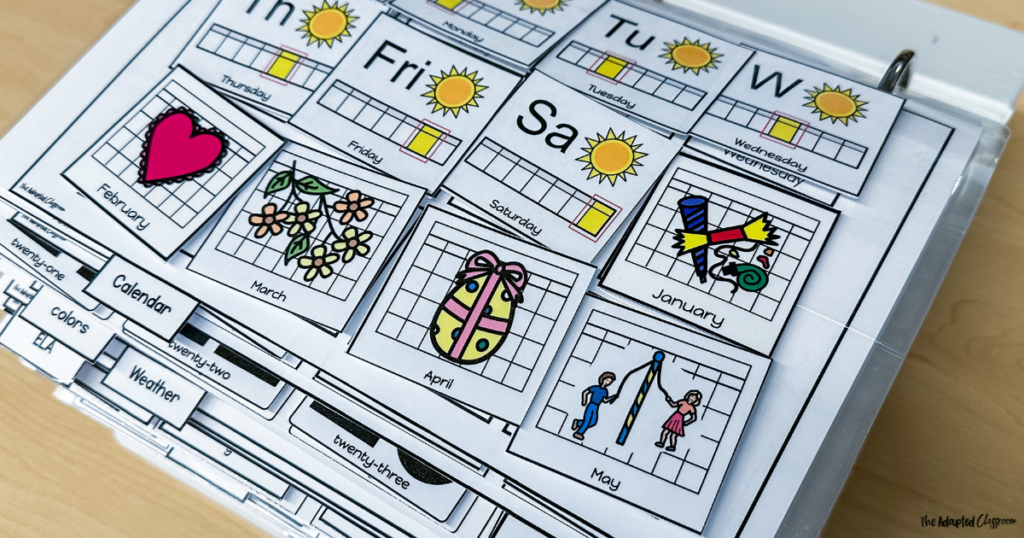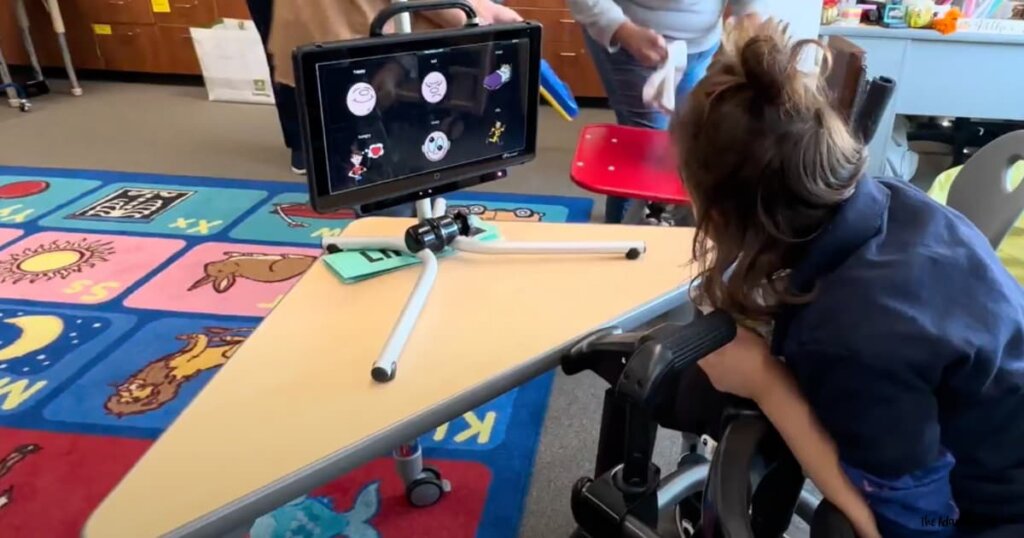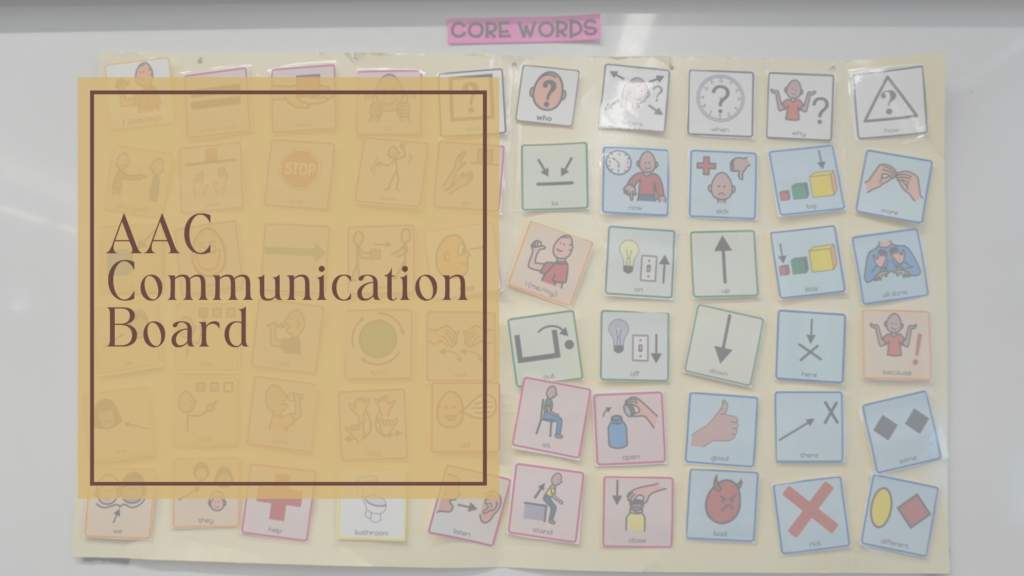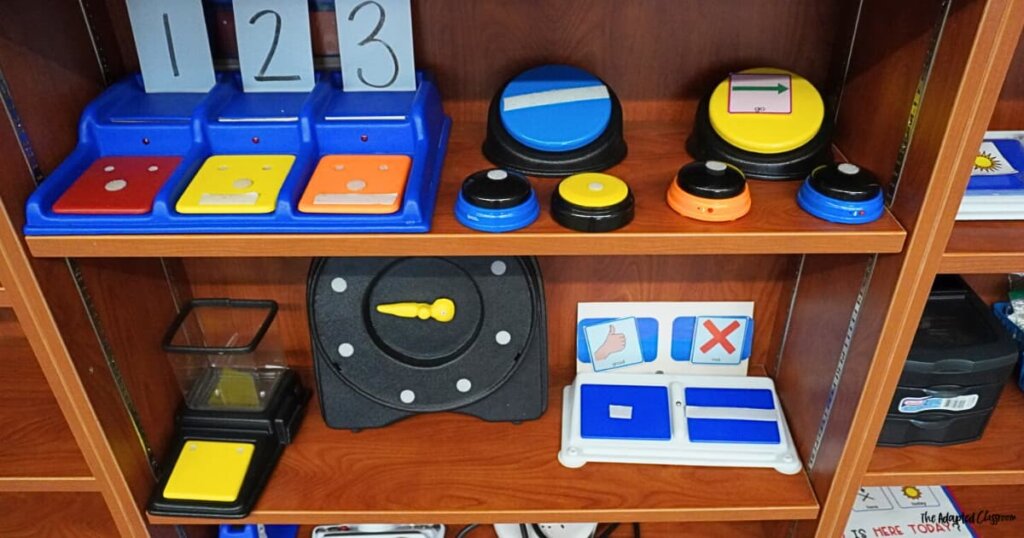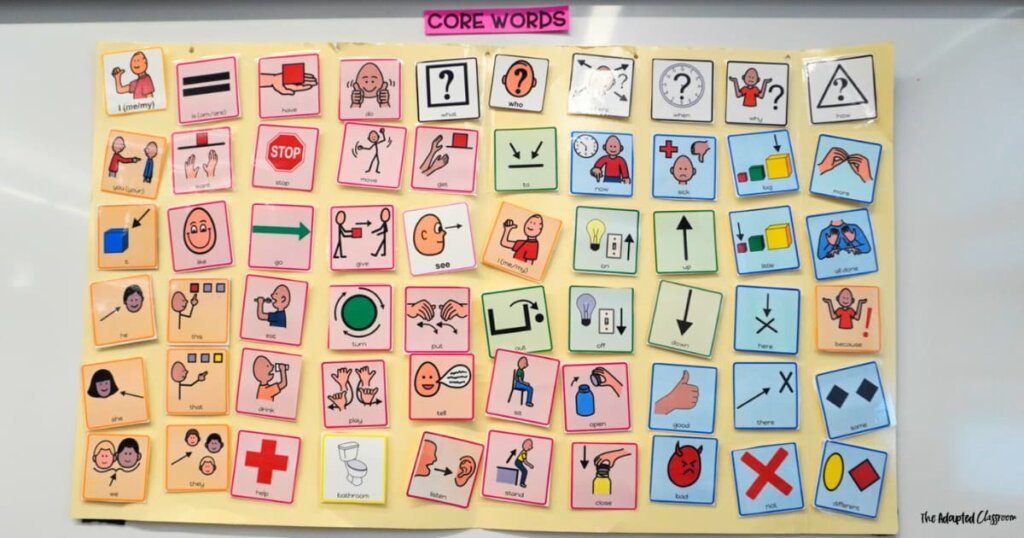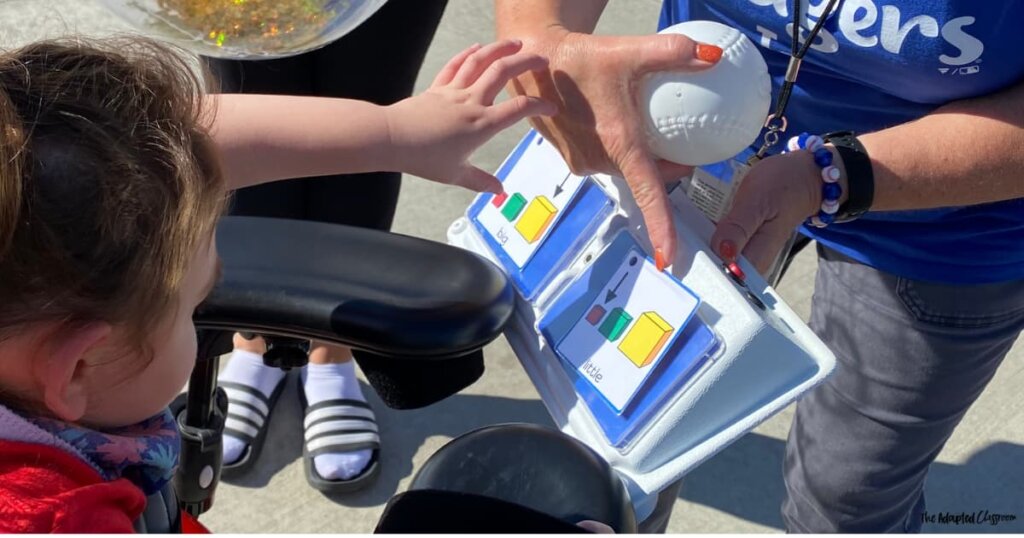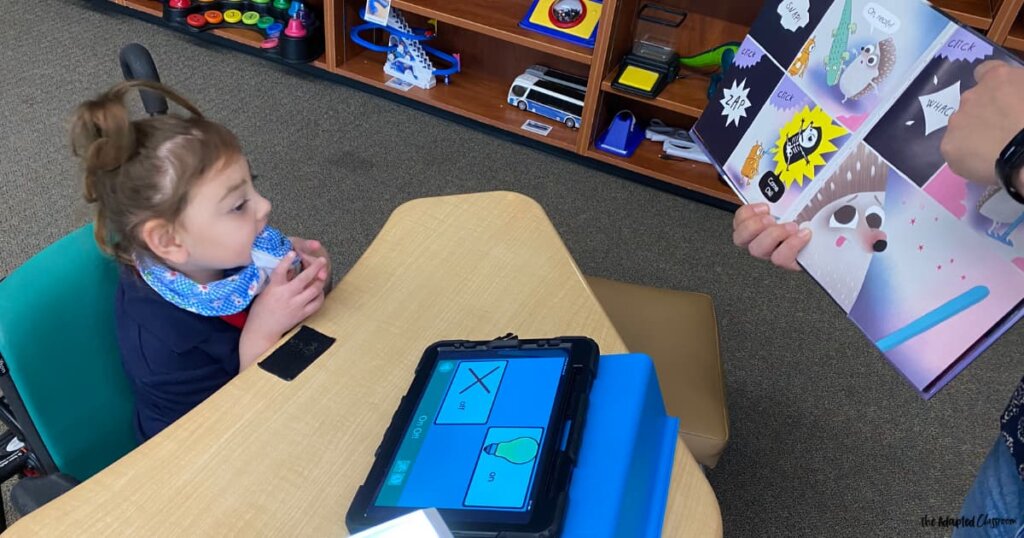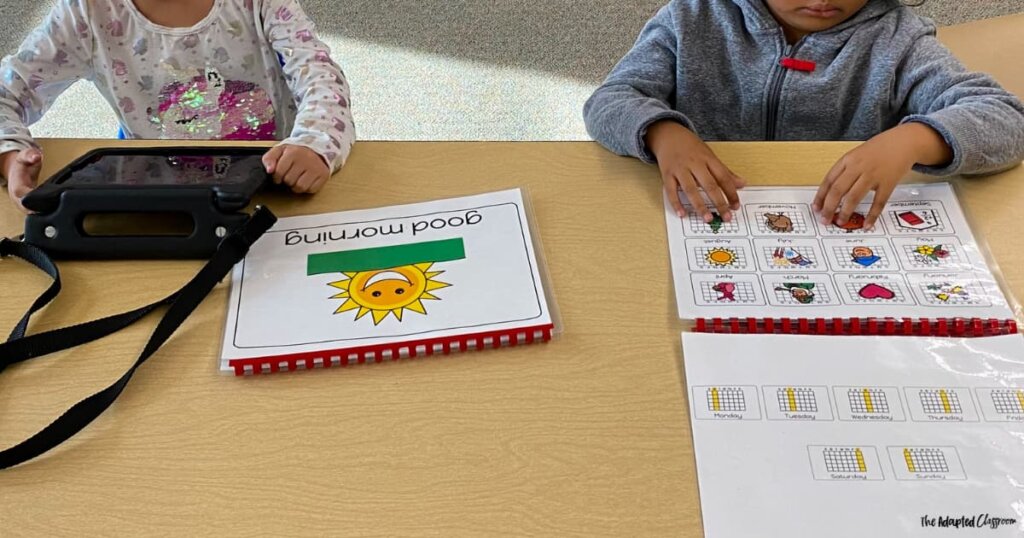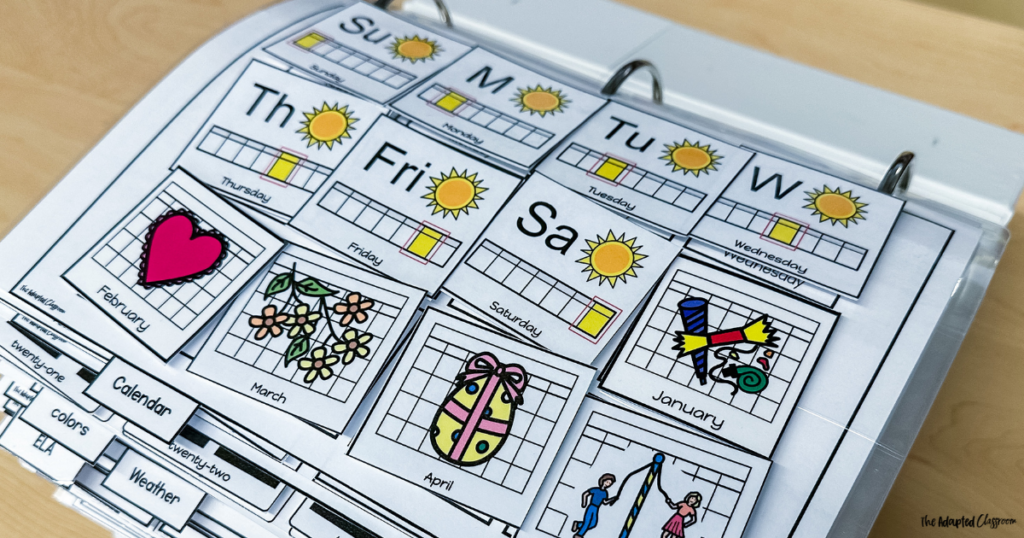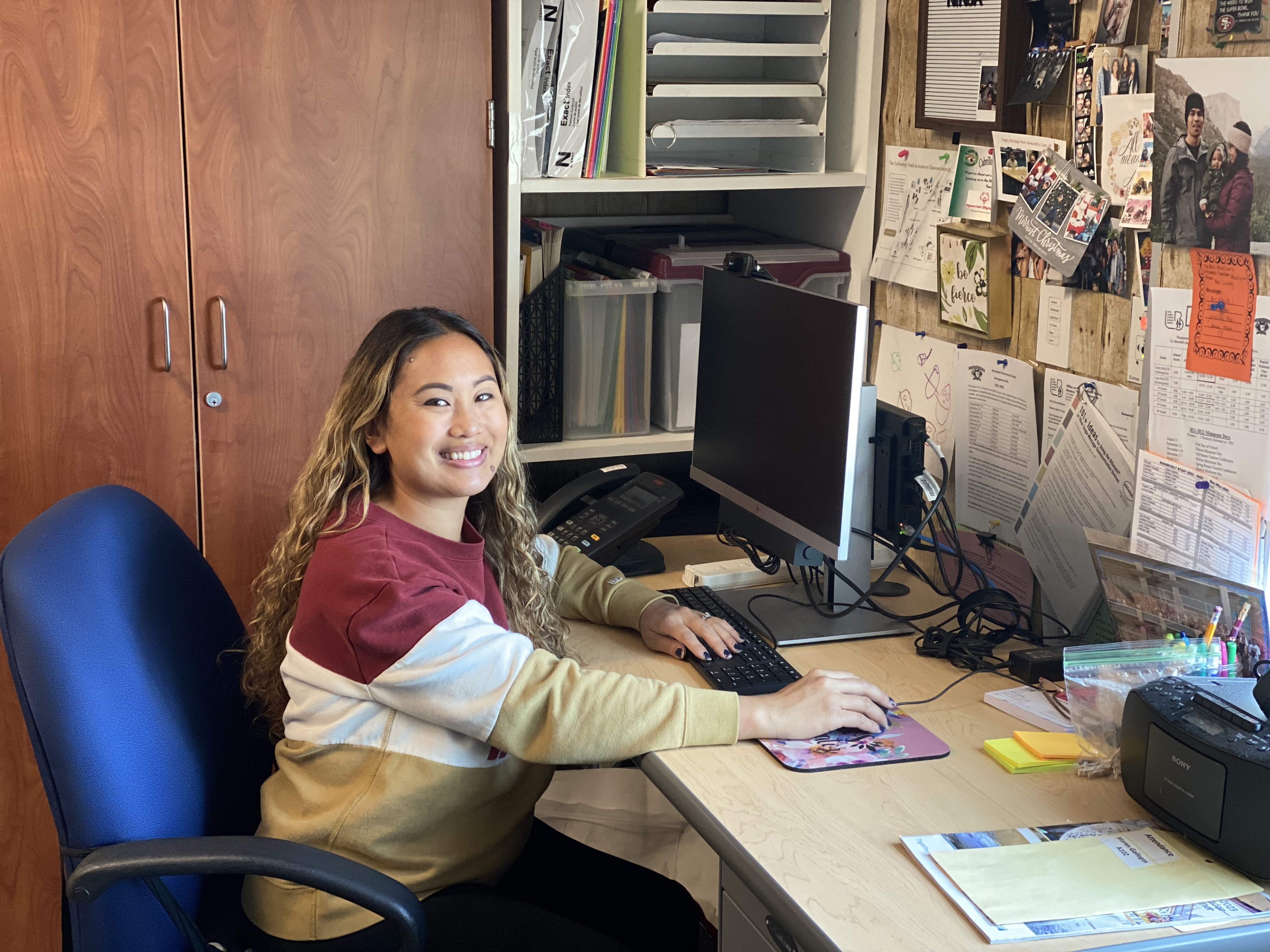Setting up a self-contained classroom for severe needs can be a daunting task, but with proper planning and preparation, it can be a rewarding experience for both the special educator and special education students.
As a special education teacher with several years of experience in a self-contained setting, I have found that a well-organized and well-thought out classroom environment can make all the difference in meeting the unique needs of students with severe disabilities.
In this post, I will share some tips and strategies that have helped me create a successful classroom for students with severe needs.
What is Considered a Severe Disability?
First, let’s make sure we are all on the same page:
Public schools and the IEP team want students in special education to be in the least restrictive environment (LRE) during the school day.
This might look like being in a general education classroom with additional support but it can also look like being in a classroom with a smaller class size that is primarily a special education room that would be considered a self-contained classroom.
A severe disability is typically defined as a condition that significantly impacts a person’s ability to perform everyday activities. This may include physical, cognitive, sensory, or intellectual impairments that result in substantial limitations in areas such as mobility, communication, self-care and independent living.
Severe disabilities often require extensive support, accommodations and specialized services to help individuals participate fully in society. Students with severe needs may qualify for self-contained programs within their school district.
Types of Severe Needs Disabilities
Specific examples of a severe disability in special education include:
Autism Spectrum Disorder (ASD) – Individuals with severe ASD may have significant impairments in communication, social interaction, and behavior, requiring intensive support and specialized instruction.
Intellectual Disability (ID) – Students with severe ID have limitations in intellectual functioning and adaptive behavior, needing extensive assistance with daily living skills and academic tasks. These students typically have an IQ of 70 or below.
Multiple Disabilities – This multiple disabilities category includes students with more than one severe disability, such as a combination of intellectual disability, physical disability, sensory impairment, or other conditions that significantly impact their learning and development.
Traumatic Brain Injury (TBI) – Students with severe TBI may experience cognitive, physical and emotional challenges that require specialized interventions and accommodations to access the curriculum.
Orthopedic Impairment – Severe orthopedic impairments, such as paralysis or amputation, can affect a student’s mobility and independence, which would require specialized support and assistive technology in the educational setting.
Understanding the Needs of Severe Disabilities
One of the first things to consider when setting up a self-contained classroom is the actual physical layout of the classroom. It is important to create a space that is safe, comfortable, and conducive to learning.
- Consider factors such as lighting, temperature and noise levels.
- Arrange furniture in a way that allows for easy movement (especially for someone in a wheelchair or using adapted equipment) and access to materials.
- Create designated areas for different activities such as reading, writing, math and sensory play.
By carefully planning the physical layout of the classroom, you can create a space that promotes independence, engagement and success for your special needs students.
Self-Contained Classroom Setup:
Another important aspect of setting up a self-contained classroom is creating a structured routine and schedule. Many students with severe disabilities thrive on routine and predictability, and having a consistent schedule can help them feel safe and secure in their learning environment.
Create a visual schedule that outlines the daily routine and activities.
Use visual supports such as pictures, symbols, or written words to help students understand what is happening throughout the day.
By establishing a structured routine, you can help your students feel more comfortable and confident in their ability to navigate the classroom environment.
GRAB AN EDITABLE VISUAL SCHEDULE HERE!
When setting up a self-contained classroom for severe needs, it’s important to understand the unique needs of students with severe disabilities. These students may have complex medical needs, limited communication abilities and also require specialized equipment and supports.
It’s important to take a person-centered approach and work closely with families and other professionals to develop an individualized education plan (IEP) that addresses the student’s needs and goals.
In addition to individualized planning, there are some general strategies that can be helpful in setting up a self-contained classroom for students with severe needs.
1. Create a Safe and Accessible Environment
Students with severe disabilities may require specialized equipment, such as wheelchair ramps, lifts or adaptive seating.
First, it’s important to ensure that the classroom is physically accessible and that all equipment is in good working order for students.
Additionally, its usually best if your classroom is designed to minimize distractions and provide a calm, safe environment for learning. Sometimes if there are too many colors or items on the walls, kids can become over-stimulated.
Provide the Appropriate Supports
Students with severe disabilities may require a range of supports to participate in classroom activities, such as AAC communication devices, sensory supports or even physical assistance.
It’s important to work closely with families and other related services to identify the appropriate supports for each student and ensure that they are provided consistently.
Foster Communication and Social Interaction
Many students with severe disabilities tend to have limited communication abilities, which can make it challenging to interact with their peers and teachers.
It’s important to provide opportunities for communication and social interaction, such as times for structured peer interactions (think a morning calendar routine or another whole group activity), social skills and social stories, or visual supports. I would suggest working hand in hand with your speech therapist to give students all of the supports that they need.
2. What are the Essentials of a Self-Contained Classroom?
As a special education teacher, I know how important it is to have a well-organized and safe self-contained classroom. Here’s what I consider essentials when planning my classroom set-up:
Classroom Layout and Design
The layout and design of the classroom play a crucial role in creating a positive learning environment. The classroom should be spacious enough to accommodate all students and provide enough room for adaptive equipment.
The furniture should be arranged in a way that promotes movement and accessibility. For example, if you have any students who will be in wheelchairs-you want to make sure that there is a wide enough space between the desks or tables for the wheelchair to get through.
I recommend using visual aids to help students understand the classroom layout and routines. For instance, you can use pictures or symbols to indicate where students should hang their backpacks, store their materials or sit during morning calendar time.
Safety Measures
Safety measures are essential in a self-contained classroom. Students with severe needs may have mobility issues, which can put them at risk of injury. Therefore, it is crucial to have safety measures in place to prevent accidents.
I suggest having a clear emergency plan that outlines what to do in case of an emergency, such as a fire or earthquake. You should also have safety equipment, such as fire extinguishers and first aid kits, readily available. I keep my safety kit (it’s a backpack) right by the classroom door so I can grab it easily as we are exiting the classroom in an emergency!
Adaptive Equipment
Adaptive equipment is very necessary to help students with severe needs access the curriculum and participate in classroom activities.
Some examples of adaptive equipment include: communication devices, sensory equipment and mobility aids.
It’s important to have a variety of adaptive equipment available to meet the diverse needs of your students. You should also make sure that the equipment is properly maintained and stored in a safe and accessible location. Have your paraprofessionals help you with this task.
3. What Kind of Curriculum to Use with Severe Needs Students?
The best way to know what your students will need to work on will honestly be to start working with them and get to know them!
Developing a curriculum for a self-contained classroom for severe needs requires a lot of planning and individualization. Here are some strategies that I have found to be effective:
Consider the Individualized Education Plans
Individualized Education Plans (IEPs) are an important part of curriculum development and planning lessons for students with severe needs.
IEPs should be developed with input from parents, teachers and other team members that work with the student to ensure that they meet the student’s specific needs and abilities. The goals and objectives in the student’s IEP should be measurable and should address the student’s individual needs in these areas: academic, social and behavioral.
Incorporate Life Skills into your Self-Contained Classroom
In addition to basic skills and academic skills, it is really important to incorporate life skills into the curriculum for students with severe needs.
This can include things like hand-washing, cooking, toilet training and money management. One effective way to incorporate life skills is to use real-life scenarios and hands-on activities.
For example, students can practice shopping for groceries or cook a snack in the classroom.
4. Think about the Overall Layout of Work Areas
For a life skills self-contained classroom, you are going to want to have different areas for your group of students.
For example, you may want to have a whole group area by the SMARTboard, a table for academic subjects and an independent work area for things like individual work bins.
5. Have Communication and Language Supports in Place
As a teacher in a self-contained classroom for severe needs, I know how important it is to provide communication and language support for my students. Here are some strategies that have worked well for me:
Use AAC Devices
Augmentative and Alternative Communication (AAC) devices can be a game-changer for students who struggle with communication. These devices can help students express their wants and needs, participate in classroom activities, and engage with their peers.
I have found it helpful to provide a variety of AAC devices in my classroom, including low-tech options like AAC communication boards and high-tech options like tablets with speech-generating software.
Provide Visual Supports
Visual supports can also be a powerful tool for supporting communication and language development.
I use visual supports like schedules, social stories and picture cues to help my students understand expectations and communicate their needs. I have found that using visual supports can reduce anxiety and increase independence in my students.
We actually do tons of crafts in my severe needs special education room and I always provide visual directions for this exact reason.
Utilize Assistive Technology
Assistive technology refers to devices, software, and equipment that can help students with disabilities to learn and participate in the classroom.
One example of assistive technology that I have found to be particularly helpful is text-to-speech software. This software can read aloud text from a computer screen, making it easier for students with visual impairments or reading difficulties to access written material. There are many different text-to-speech programs available, ranging from free options like NaturalReader to more advanced programs like Read&Write.
Another type of assistive technology that I have found to be useful is communication devices. These devices can help nonverbal students to communicate with their peers and teachers.
Some examples of communication devices include picture boards, communication apps and voice output devices. It’s important to work with a speech-language pathologist to determine which type of communication device will work best for each student.
7. Establish Clear Classroom Expectations from the First Day
As a self-contained classroom teacher, I understand the importance of creating a supportive community in a self-contained classroom for students with severe needs. Building and maintaining strong relationships with students, parents and paraprofessionals goes a long way in creating a positive and inclusive environment for everyone!
Setting clear expectations for behavior and academic performance is crucial in creating a supportive community. I make sure to communicate my expectations to my students and have clear communication with parents from the beginning of the school year, this way there are no surprises at all.
What other tips do you have for setting up a self-contained special education classroom?







